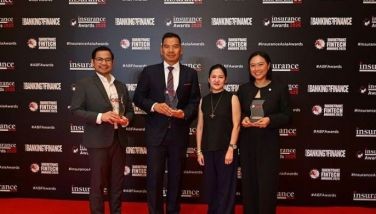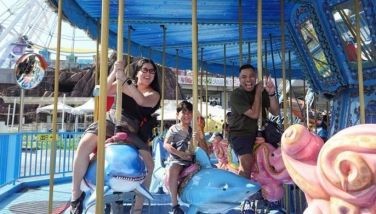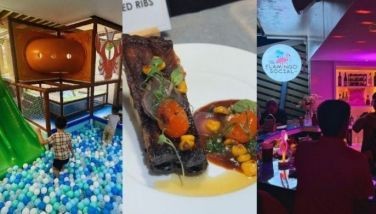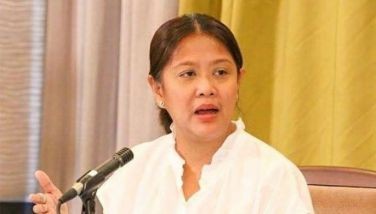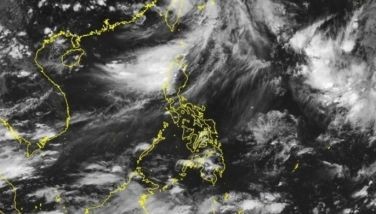Thank you to Filipino historians of Butuan

As a columnist of Philippine STAR, I am grateful to those who not only read my column but write to correct “facts” that have been ingrained in the education of Filipinos.
This week, I would like to thank Potenciano R. Malvar, MD, FPCS, FPCRS and his group of historians from Butuan who sent this column a booklet entitled “Butuan not Limasawa” to prove that the first mass in the Philippines was held in Butuan in 1521. Professor Malvar’s dedication and work to this fact is commendable to what he says was to “right a wrong”. I have never been to Butuan but it was not where the first mass was held that mattered to me. It is written in our history books and learned by generations of Filipinos.
Malvar sent me the booklet because he read my column “Balangay boat as symbol of ancient Filipino ingenuity” about which I wrote only last year. What mattered more to me was what Art Valdez said about the balanghai. He told me that we should emphasize the context of citing Butuan. We should use the event in Butuan to celebrate ancient Filipino ingenuity. Valdez said we should find a way to make it a national symbol so that Filipinos remember and honor our Filipino ancestors before the Western colonizers came.
Antonio Pigafetta mentioned balanghai several times in his manuscripts on the Philippines.
“There is only one correction we need to notice in your article po, Raia Colambu was the Raia of Butuan and Calagan, while Raia Siaui his domain was Mazaua,” added Malvar in his letter.
That was probably why rather than call it “Balanghai ng Maharlika” for a planned journey around the islands that would end in China, Valdez and group chose to name the ancient boats “Balangay Raya Kolambu” (King of Mazzaua) and “Balangay Sultan sin Sulu” to “Balangay Raya Siayo/Siagu” during the planned (King of Butuan) for the journey that would start from San Vicente, Palawan.
I have lost touch with Art Valdez. I don’t know whether the planned journey actually happened. It would have been a brilliant idea to demonstrate the commonality of the Asian sea now known only as China Sea to the Chinese and West Philippine Sea to Filipinos.
What rubbish, ancient Filipinos would probably say. It was simply a body of water to travel from place to place in a balangay.
In the planned journey two balangay boats made by Filipinos will then cross the Sulu Sea to reach Butuan, the ancient kingdom of pre-colonial ancestors. Representatives from Butuan City will then join the voyage and sail toward Cebu-Mactan, site of the major Quincentennial celebrations. The return journey home to Palawan would mark an almost month-long and celebrate the 2,000-kilometer voyage.
Ancient Filipinos were problem solvers. And it is should be widely known and celebrated.
Balanghai Festival is a celebration in Butuan, Agusan del Norte to commemorate the coming of the early migrants that settled in the Philippines, on board the Balangay boats.
The Balangay is also referred to as the Butuan boat as the name for human small communities by the Spaniards. As a boat balanghai or Spanish barangayanes, is a type of plank boat adjoined by a carved-out plank edged through pins and dowels. It was first mentioned in the 16th century in the Chronicles of Pigafetta, and is known as the oldest watercraft found in the Philippines. The oldest known balangay has been carbon-dated to 320 CE.
It was the first wooden watercraft excavated in Southeast Asia and are evidence of early Filipino craftsmanship and their seamanship skills during pre-colonial times.
The Balanghai Festival is also a celebration in Butuan, Agusan del Norte to commemorate the coming of the Austronesian migrants that settled in the Philippines, on board the balangay boats. When the first Spaniards arrived in the 16th century, they found Filipinos living in well-organized independent villages called barangays. The name barangay originated from balangay, the Austronesian word for “sailboat.”
We arranged a meeting with Chinese embassy officials to push for a common effort to preserve the sea rather than fight about it.
Valdez is aware of the implications of the trip at a time when the Philippines and China still have a territorial conflict over parts of the South China Sea. But that is the point. In those times there were no conflicts about the sea. There should be no conflict.
“It is very sad because we are a maritime people. We are gifted and natural in the waters but colonialization robbed us of that consciousness. I am doing this to help rekindle that spirit,” Valdez said. This project reconnects us to our pre-Spanish period at the same time that we need to reach out to our neighbors in the Asian region. There has been a hiatus in which we lost that connection during the Spanish and American colonial periods.
“We should explore our past and our capacity as a people with the balangay. We can be proud of a race that was not reluctant to take the high road of adventure by relying only on instinct and nature. We should look to that past as we face contemporary problems.”
To return to the original message of this column we must revisit our past as often as we can to understand the country’s challenges: whether it is church vs. state, the invention of the Filipino Badjao made balangay and the success of the Galleon trade with the Philippines as its entrepot.
The balangay should be recognized as the invaluable contribution of our forefathers. They shaped our maritime tradition and cultivated the values of solidarity, harmony, determination, courage and bravery.
The extensive utilization of balangay for trade confirms the active involvement of our forefathers in robust commercial activities in Asia as early as the 10th and 11th centuries.
As problem solvers Filipinos have this do or die attitude. If there is a problem, he will not sleep until he is able to find a solution. We have to rekindle that attitude.
- Latest
- Trending









